Helena Paul and her partner have spent most of their daughter’s three years of life trying to soothe her itchy atopic dermatitis - better known as eczema.
Little Monica Maoate can point out where the scars are on her body - on both her elbows, on the left shoulder blade on her back and behind her right knee. The condition affects Pasifika and Māori children more often than European kids.
“From the beginning ... we were constantly at the doctor’s - like every week - for prescriptions and creams to help her,” Paul told the Herald.
“We were constantly applying and applying but it wasn’t helping.”
The so-called ‘miracle cream’
While scrolling through TikTok one day, Paul came across an influencer talking about a cream to fight eczema.
It was NaturaCoco - poised to become hugely popular among Pacific and Māori communities on the back of social media posts - and then endorsements.
Parents started posting before-and-after photos showing - sometimes severe - eczema on their babies and children, gone within a day or two. Some of them used the words “magic” and “miracle cream.”
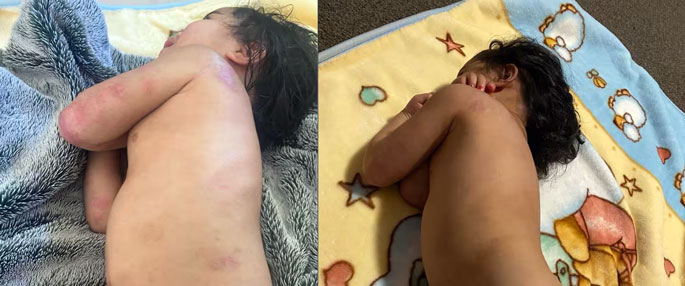 Monica Maoate pictured before and after using the NaturaCoco cream for eczema. It worked, but wasn't safe and is now banned. Photos / Helena Paul.
Monica Maoate pictured before and after using the NaturaCoco cream for eczema. It worked, but wasn't safe and is now banned. Photos / Helena Paul.
NaturaCoco was made in the Philippines and sold by a Hamilton-based retailer, NaturaCoco New Zealand.
The family-run retailer promoted the products online as “kid-friendly” and “suitable for all ages”.
Paul bought a 100g pot for $34.95 for Monica. Within 24 hours of using it, she saw a marked difference, she said.
It became the family’s go-to cream to treat Monica’s eczema. They even bought an extra pot for the preschool she attends, so teachers could use it on her whenever she had a flare-up.
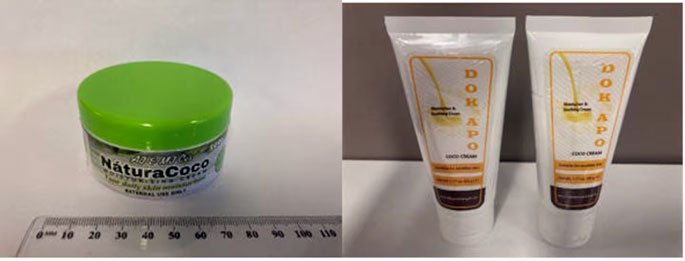 The NaturaCoco moisturing and soothing creams contained a prescription-only steroid not cleared for use in New Zealand, Medsafe said. Anyone who has used the creams should check with their GP about side effects. Photo / Medsafe.
The NaturaCoco moisturing and soothing creams contained a prescription-only steroid not cleared for use in New Zealand, Medsafe said. Anyone who has used the creams should check with their GP about side effects. Photo / Medsafe.
“My daughter wasn’t scratching through the night and we weren’t having to constantly apply it. If she had a minor flare-up, we would just apply it and it was gone by the next day.
“I trusted it. It was affordable, we stocked up on it. It was good.”
But it was all too good to be true. in April, New Zealand’s medical safety authority Medsafe issued an urgent alert, halting the sale of NaturaCoco cream and warning the public against it.
“Do not use NaturaCoco Moisturising Cream or Dok Apo Moisturiser Soothing Cream” Medsafe warned.
NaturaCoco - also sold under the name Dok Apo - had been found to contain the potent steroid corticosteroid fluocinonide, which should only be used on prescription from a doctor. The product labels did not declare the presence of fluocinonide.
There are no approved products containing fluocinonide in New Zealand.
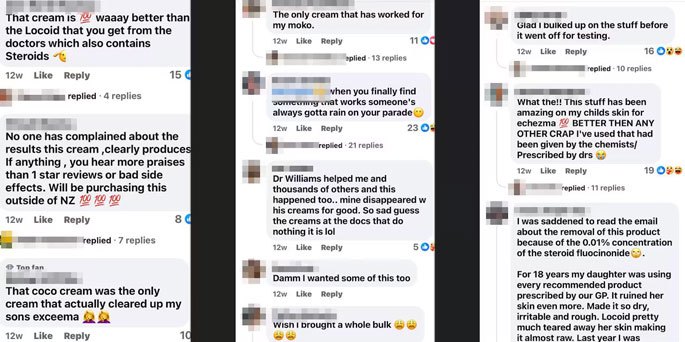 Online comments from NaturaCoco users when the cream was banned. Photo / Facebook.
Online comments from NaturaCoco users when the cream was banned. Photo / Facebook.
The side effects of using the steroid cream over a long time, or over a large surface area, could include decreased growth in children according to the UK National Health Service.
Medsafe seized the products already in New Zealand and warned families the risk of side effects was highest in children.
“Safely dispose of it or contact a local pharmacy to arrange safe disposal” it said.
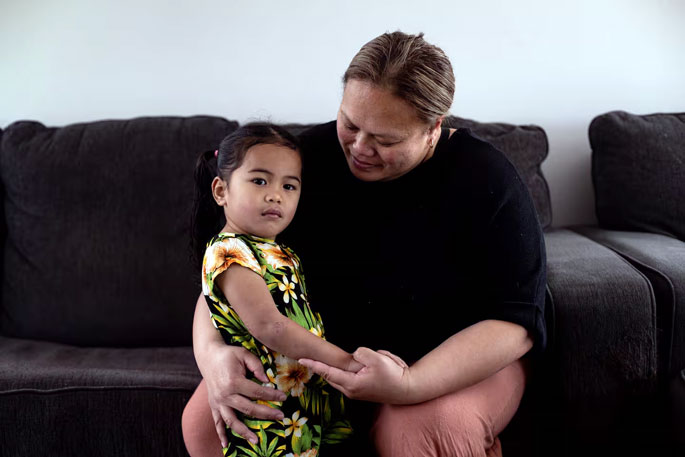 Helena Paul with her youngest daughter, 3-year-old Monica, who has eczema. Photo / Dean Purcell.
Helena Paul with her youngest daughter, 3-year-old Monica, who has eczema. Photo / Dean Purcell.
“The risk of side effects is greatest if you have been using these creams for a long time on a large area of skin, if the skin was broken, or if used on children”
NaturaCoco said on its website it was no longer able to sell or distribute the products in New Zealand and was cooperating with Medsafe to recall them.
It offered refunds to customers.
“We sincerely apologise for this error. As small business owners, we are devastated by this result.
“We started importing this cream to the New Zealand market after our own child, who battled with skin problems, finally found some relief.”
In New Zealand, about 193,000 children and 212,000 adults live with eczema, according to the Eczema Association NZ (EANZ). About 20-40 per cent of children diagnosed with the condition will live with it for most of their lives.
Ointment disappointment
Paul told the Herald that it was difficult when Medsafe banned NaturaCoco.
“It’s very frustrating because I found NaturaCoco worked for us. I am trying to look for something new, trying to not think of NaturaCoco.”
NZ Dermatology & Skin Cancer Centre dermatologist Dr Scott Barker said there was no cure for eczema, and the main goals were to reduce itch, minimise rash and limit the impact on quality of life.
A new survey commissioned by the Eczema Association found eczema sufferers tried an average of five different treatment options. One in five people with eczema reported trying more than 20.
Sixty-two per cent of those surveyed said they felt a sense of hopelessness after all the treatments they have tried and doctors they had seen, and 84 per cent said they felt frustrated not to have found an effective long-term treatment.
‘Pain, sleepless nights, anxiety, helplessness’
EANZ spokeswoman Vanessa Jenkins said eczema sufferers described a depressing cycle of hope and despair - trying to find a solution.
“Hope with the initial promise of a new treatment, followed by despair when it stops working. It’s a cycle repeated many times over for New Zealanders with eczema.”
Jenkins said there were several different creams and medications dermatologists and GPs prescribe, but acknowledged there was no one miracle cream at this point.
Paul said it had been hard living without the one cream that worked.
The family has tried kawakawa, and oils from the Cook Islands - but nothing has been effective.
Of her daughter’s eczema condition, she said: “It’s just gone back to what it was in the beginning.”

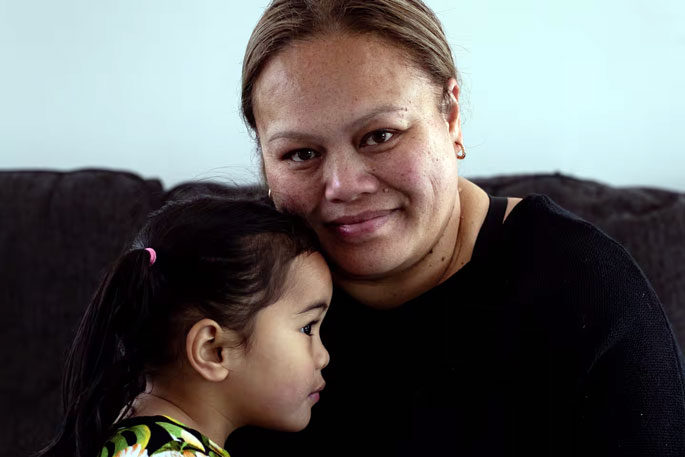

2 comments
IT STARTS FROM WITHIN
Posted on 11-07-2024 08:38 | By LHem
I too, was an excemia baby, I'd scratch myself raw with my hairbrush, then once puberty hit, it magically disappeared! Topical cremes with steroid work wonders for relief, but it never truly goes away until you hit your tweens. I imagine you have already removed all dairy products? Have you considered adding coconut milk/water to her diet? Add baking soda to the bath to lower the PH level, water alone can sting raw skin, and use soap FREE substitutes such as Aqueous cream all over the body, water down shampoos to minimize detergents. AVOID any cream that has a perfume scent, and don't sit her directly on the grass, this flared mine up instantly! Speak to health line or email skin centre for alternative treatments for children. Goodluck, you sound like a GREAT mum...but make small changes to her diet.
@ LHem
Posted on 11-07-2024 09:56 | By Yadick
What a GREAT comment. Really nice of you to step up and reach out with some positive ideas of help.
Much respect to you.
Leave a Comment
You must be logged in to make a comment.